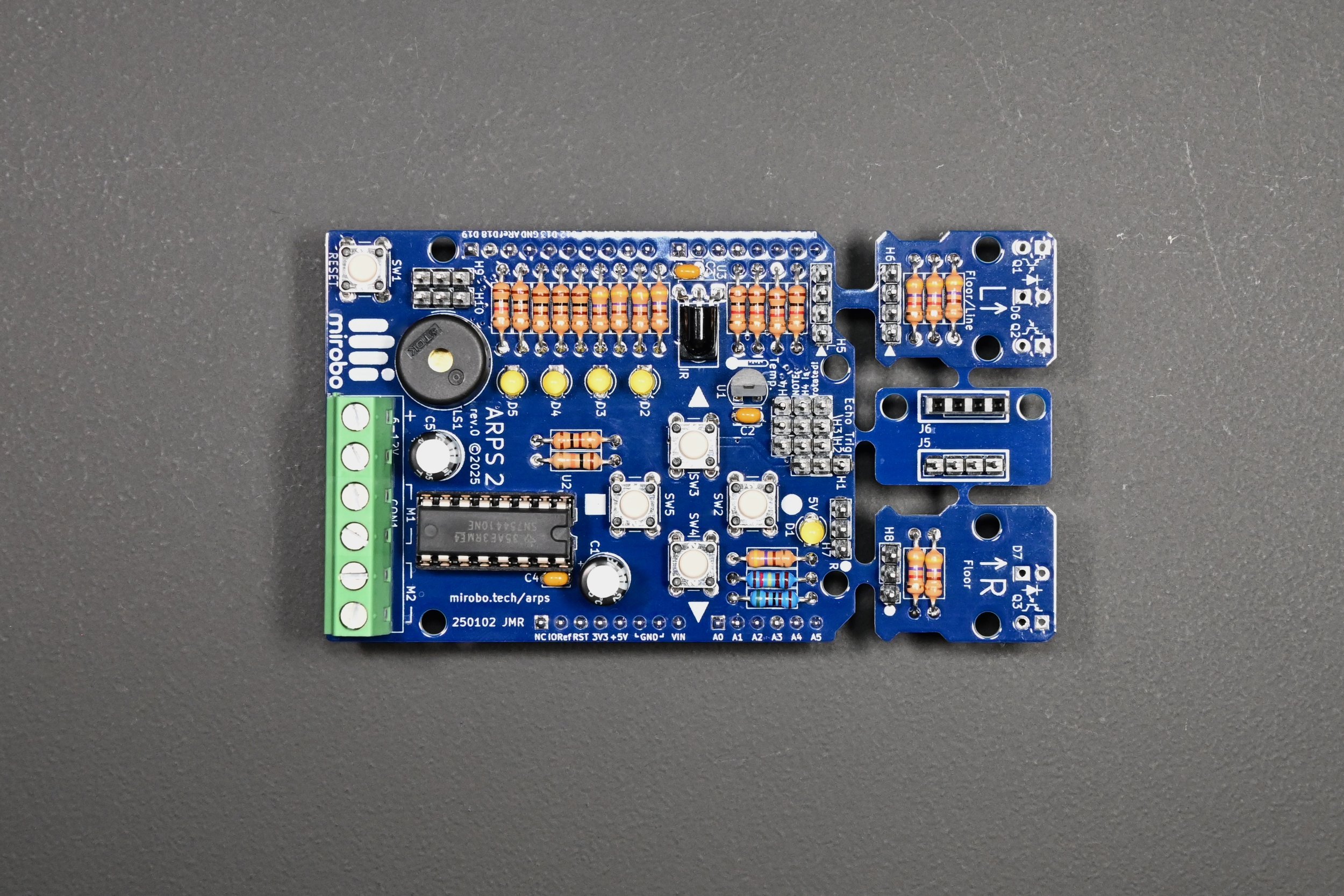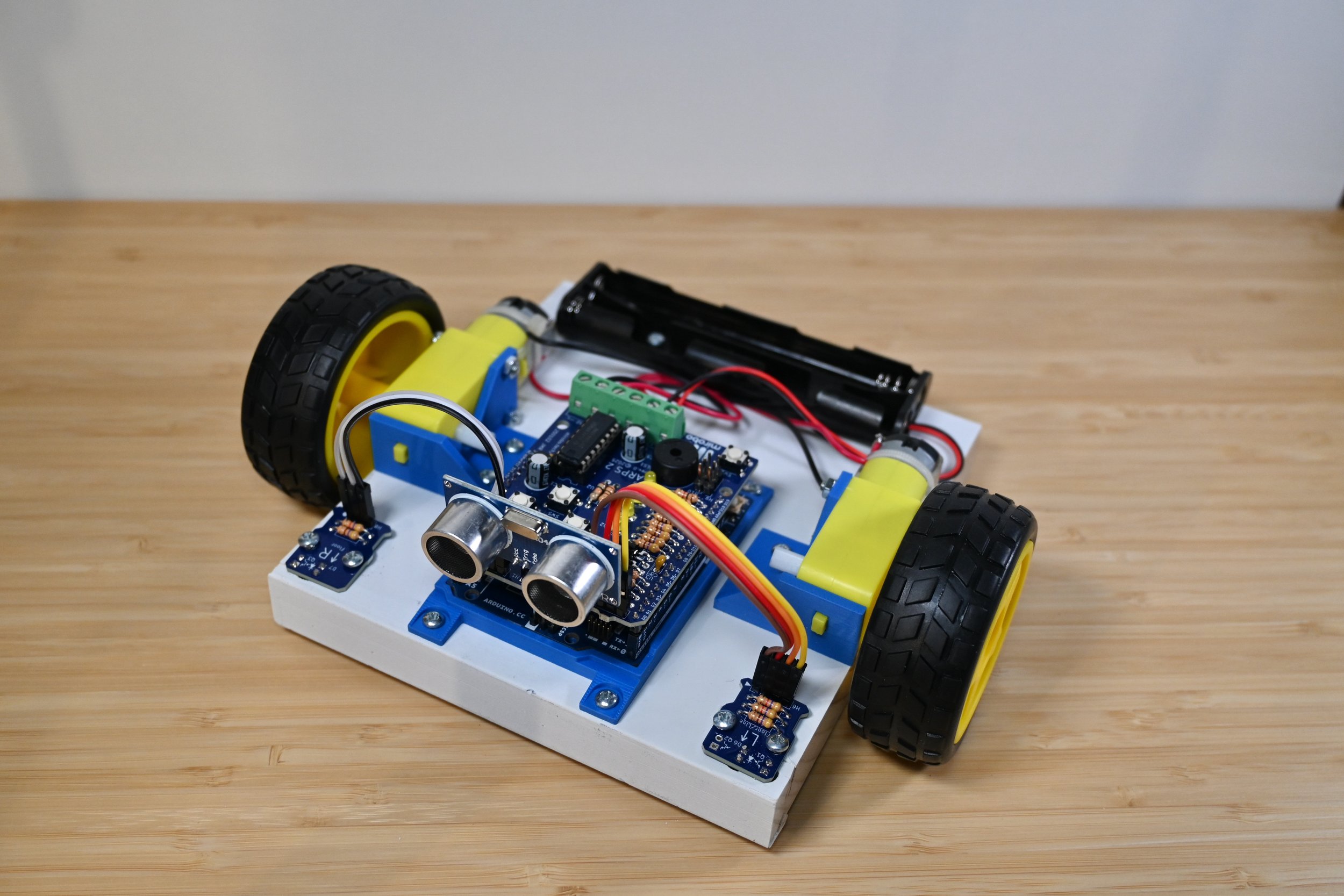
Accelerate your learning with ARPS-2!
Go from learning programming to building robots, fast.
ARPS (Arduino®-compatible Robot Project Shield) is a versatile add-on shield for Arduino® UNO specifically designed to help new learners build and develop programming skills – and then build simple robots! Now updated to version 2!
ARPS-2 incorporates commonly-used starter hardware components such as pushbuttons, LEDs, a piezo beeper, and a temperature sensor on-board. Beginners use these built-in parts and our comprehensive introductory learning activities to quickly learn the fundamentals of Arduino programming.
After mastering the basic programming skills, additional robot-focused components built into ARPS-2 make it easy to construct simple line-following, object-sensing, remote-controlled, and Sumo robots. Just add your favourite Arduino UNO, some DC gear motors and a battery, and your robot will be rolling in no time!
ARPS is designed for beginners
By pre-wiring all of the commonly used starter I/O devices on the ARPS-2 circuit board, beginners can focus on learning fundamental programming skills quickly – without the delays of building, debugging, and re-building breadboard circuits as they advance to learning new skills.
Ready to build a robot? ARPS-2 supports a motor driver chip, a voltage divider to monitor battery levels, and expansion headers for a SONAR module, servos, bumpers, or other sensors. Plus, two snap-away optical floor sensor modules are part of the PCB – use them to make a line following robot, or to detect changes in wall or floor values. There’s even an IR demodulator to give your robots remote-control capabilities!
A complete set of step-by-step introductory programming activities introduce all of the foundational programming concepts and skills needed for beginners to start creating their own microcontroller programs.
An ARPS-2 circuit built in the robot starter configuration and installed on top of an Arduino UNO Rev 3 microcontroller board. ARPS-2’s break-away optical floor sensor modules are still attached (far right), and an optional SONAR distance sensor module is plugged into its I/O expansion header.
An original ARPS circuit controlling a simple classroom robot built on a sheet of MDF. A chair glide mounted underneath the battery holder raises the optical sensors high enough to detect the floor, and the top-mounted SONAR distance sensor module allows the robot to detect obstacles and other robots.
Great for schools and maker spaces
ARPS-2 is designed using through-hole parts, making it easy to teach students about electronic parts and soldering as they assemble their own circuits.
Assemble ARPS-2 in a quick-build, minimal components Educational Starter configuration and customize it later. All five introductory learning activities can be completed using just parts in the ARPS-2 Educational Starter configuration. Learners can master fundamental programming concepts before deciding on their robot’s final design and components, and build costs can be reduced by omitting unnecessary components.
Go beyond robots. While its on-board components make building robots simple, ARPS-2 can just as easily support other type of projects, too! Use the motor driver to control up to four high current loads, monitor the environment using its light and temperature sensors, or drive servos or NeoPixels from the external header pins. Take your Arduino’s capabilities to the next level with the versatile ARPS-2!
An ARPS-2 assembled in the Educational Starter configuration, using a minimal and inexpensive set of components, is all that beginners need to learn fundamental programming skills using our introductory programming activities. The circuit can be fully customized with additional components later.
Simulate ARPS-2 in Tinkercad. Both the ARPS-2 Educational Starter configuration and the complete ARPS-2 circuit are shared in Tinkercad, making it easy for students to understand its circuits, and making simple for teachers to explain and demonstrate important hardware and software concepts.
Free ARPS-2 introductory learning activities! Each learning activities includes both programming analysis, designed to teach and expand on important concepts, and programming activities to encourage learners to apply their new skills in different ways.
Programmed just like Arduino
Use your existing Arduino programs and software. Both ARPS and ARPS-2 are simple add-on shields that expand the hardware capabilities of Arduino UNO while allowing you to continue learning or teaching using the software tools and resources you already know and use.
ARPS Learning Activities
Tinkercad Activities
Both ARPS and ARPS-2 are fully simulated in Tinkercad. See our electronics webpage for a set of five introductory learning activities as well as example starter programs.
ARPS-2 Schematic
Download the ARPS-2 schematic (.pdf).
ARPS Schematic
Download the ARPS schematic (.pdf).
ARPS and ARPS-2 Hardware Features
bottom-mounted headers designed to work with Arduino® UNO (Arduino UNO R4 Minima is recommended, but ARPS also works with Arduino UNO Rev 3 — see FAQ, below — and Arduino UNO R4 WiFi
4 user pushbuttons connected to Arduino I/O pins, plus a reset pushbutton
4 user LEDs connected to Arduino I/O pins, plus a power LED
piezo beeper for sound output
SN754410NE quad half-bridge motor driver capable of controlling two DC motors in forward and reverse, or one bipolar stepper motor, or four unidirectional DC motors from an external battery, and all connected to a 6-contact screw terminal block
precision (1%) voltage divider resistors for battery voltage sensing
MCP9700A analog temperature sensor
38 kHz IR demodulator for remote control decoding
4x 3-pin analog/digital I/O expansion area for adding an optional ultrasonic SONAR distance sensor module, NeoPixels LED, bumper switches, and more.
2x 3-pin digital I/O expansion headers for servos or other 5V digital devices (ARPS-2-only)
2x break-away reflective optical sensor modules for making line, floor, or wall sensors, plus one break-away 4-pin extension module (ARPS-2 only) to remote-mount the SONAR module
Additional ARPS Resources
Introductory C Programming Reference Google document.
Arduino language reference on Arduino.cc.
Arduino UNO R4 Minima details and order page.
ARPS-2 FAQ
What’s the difference between ARPS and ARPS-2?
ARPS is the original design, and had the possibility of shorting the screw terminal header to the USB-B shield when used with Arduino UNO Rev 3. ARPS-2 is a refinement of the design that eliminates this possibility and adds two extra 3-pin digital I/O headers (instead of allowing individually-controllable floor sensor module LEDs) and a 4-pin I/O extender board for the SONAR module.
The original ARPS PCB design is shared with PCBWay, letting schools and makerspaces buy PCBs directly from the manufacturer for the lowest cost.
Is ARPS-2 an Arduino, or does it include an Arduino?
No, ARPS-2 is not an Arduino, nor does not contain a microcontroller of any kind. ARPS-2 is an add-on circuit shield that plugs in on top of an Arduino UNO Rev 3 or Arduino UNO R4 (each supplied separately) and adds electronic components and circuits that work with the Arduino UNO to make it easier for beginners to learn programming, and to build simple robots.
Which Arduino circuits does ARPS-2 work with?
ARPS-2 is designed to work best with Arduino UNO R4 Minima, one of the newest classic form factor Arduino circuit boards. ARPS-2 also works well with Arduino UNO R4 WiFi, but covers its LED matrix display. ARPS-2 will also work with the older Arduino UNO Rev 3, but two of its pushbuttons will be inoperable (SW2 and SW3 share the USB Tx and Rx lines and can’t be used as I/O when connected to a computer).
Arduino® is a registered trademark of Arduino AG.









